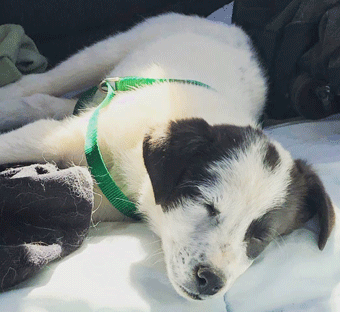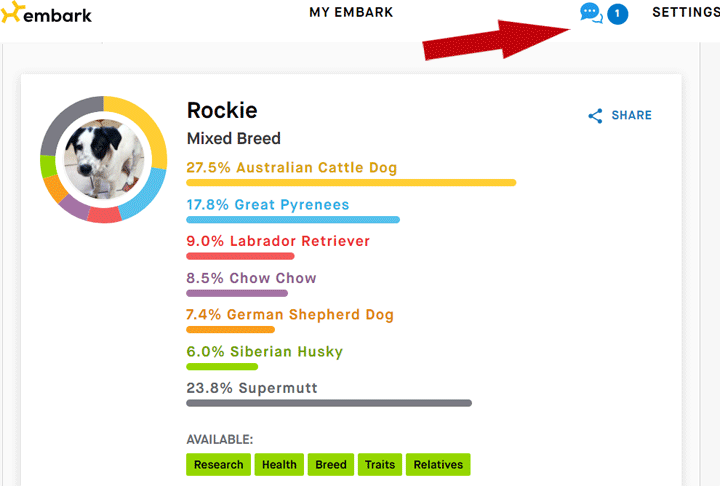Did you know that your dog has 39 pairs of chromosomes? Many more than us humans. The pet DNA testing companies now have features similar to the people testing sites, relative matching, messaging, raw data download, health results, and even a chromosome browser and painting.
Last fall I was given a puppy, found by the side of the road near Shiprock, NM by friends of mine. Of course I had to test her DNA. This time I decided to use Embark (this link should give you a discount*). Last time I used Wisdom (click here for that post) which now claims similar features to Embark. The Embark test shows only 38 chromosomes, thus not the sex chromosome, the XY or XX pair. The test is an easy cheek swab and the results came back within a few weeks.
It is important to understand that we humans deliberately created dog breeds, originally to help us hunt or herd, but also for protection or lap pets. The Victorians developed most of the more recent breeds we know today. Wikipedia has a good article on dog breeds (click here) which says “In 2004, a study looked at the microsatellites of 414 purebred dogs representing 85 breeds. The study found that dog breeds were so genetically distinct that 99% of individual dogs could be correctly assigned to their breed based on their genotype…” That sounds like these tests are likely to be accurate as to breeds.
When I logged into Embark after her results came in, I saw the image above. I was surprised that she had no border collie. because that is how her black and white markings looked to me, but apparently the white is from her Great White Pyrenees ancestor. On that home page there are many areas to explore. First I checked her health results, of course, and there was nothing bad there, phew.
Next I looked at the Breeds page which had the same image as above plus a chromosome painting by breed of her DNA. I can see that she has heeler (australian cattle dog) on both sides but Pyrenees only on one side. Both are herding breeds that might have been useful in the South West for cattle ranchers and sheepherders.


